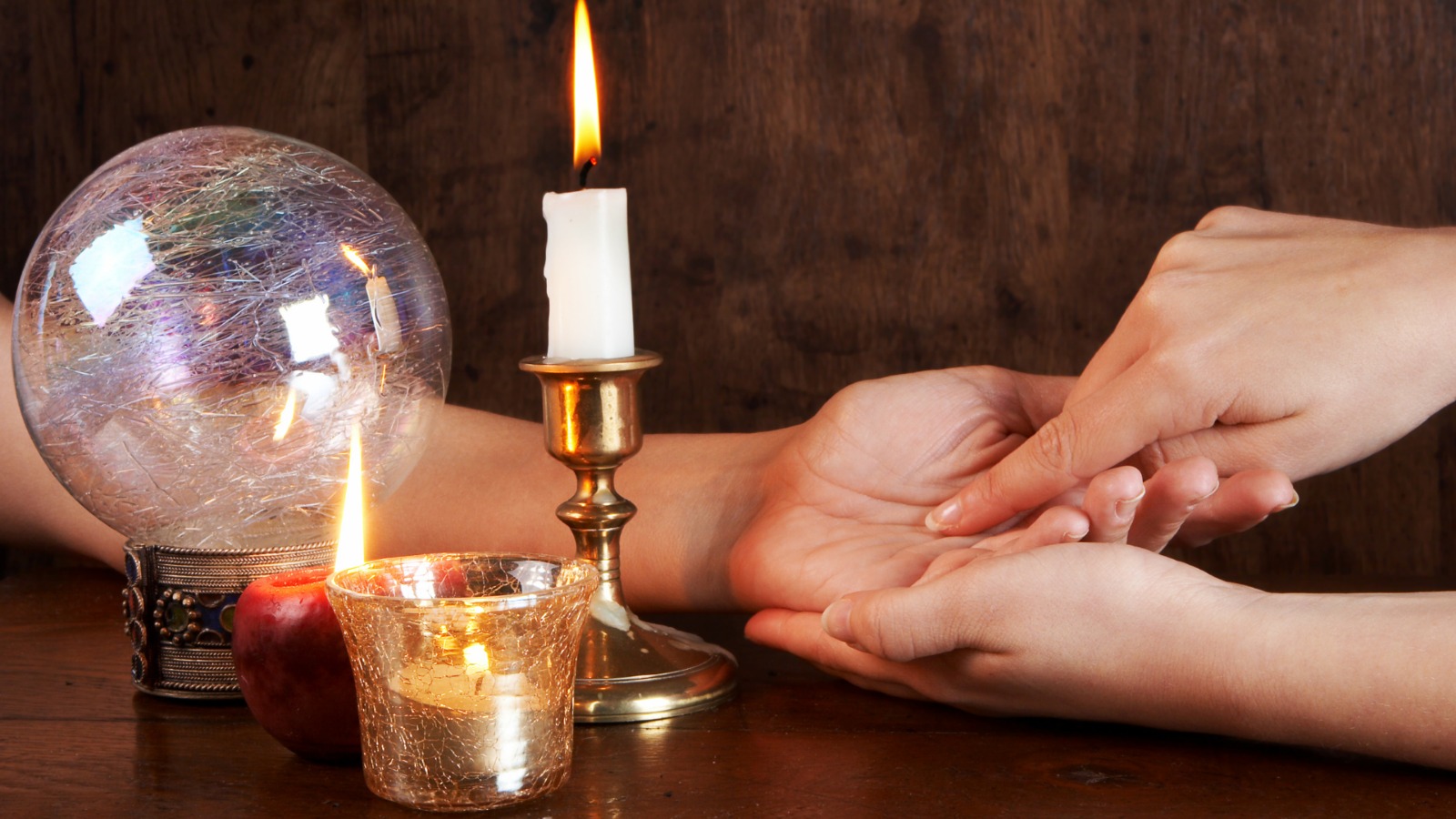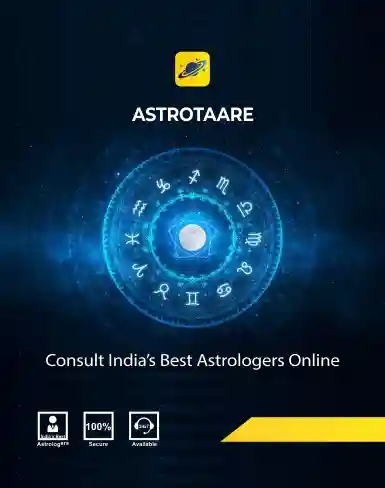Blog
How Our Hand Lines Can Reveal Clues About Our Future
Author: Astrologer
Category: Palmistry
Posted on: Oct 24, 2023

Introduction
Throughout history, people have sought various methods to uncover hidden insights into their future. From astrology to tarot cards, there is no shortage of mystical practices that claim to reveal the mysteries of tomorrow. One such practice that has intrigued and fascinated individuals for centuries is palmistry, the art of reading the lines on one's hand to gain insight into their future. This age-old tradition is based on the belief that the lines on our hands can provide a glimpse into our destiny, personality, and life experiences. While skeptics may dismiss it as pseudoscience, there is a long-standing tradition of palmistry that continues to captivate people's imaginations. In this blog, we will explore the fascinating world of palmistry and how the lines on our hands are thought to denote our future.
Also read - Exploring Ancient Wisdom of Vedic Astrology and Palmistry
The Basics of Palmistry
Palmistry, also known as chiromancy, is the practice of interpreting the lines, shapes, and mounts on the palm of one's hand. The roots of palmistry can be traced back to ancient civilizations, including the Greeks, Egyptians, and Chinese. In these cultures, it was believed that the hands contained a wealth of information about an individual's character, potential, and future.
Palmists, or those who practice palmistry, study the lines, mounts, and shapes on the hand to gain insights into a person's life. The primary focus of palmistry revolves around the three major lines on the palm:
The Heart Line: This line is positioned just below the fingers and represents matters of the heart and emotions. It is believed to reveal insights into one's love life, relationships, and emotional well-being.
The Head Line: Running horizontally just below the heart line, the head line is associated with intelligence, decision-making, and thought processes. It offers clues about one's intellectual capacities and cognitive tendencies.
The Life Line: This curved line encircling the ball of the thumb is commonly associated with longevity, health, and the general course of one's life. Contrary to popular belief, it does not predict the exact length of one's life.
In addition to these three major lines, palmists also examine secondary lines, mounts (raised areas at the base of the fingers), and various marks or symbols on the palm. Each of these elements is thought to convey unique insights into an individual's past, present, and future.
The Heart Line: Matters of the Heart
The heart line is often associated with emotions and relationships. In palmistry, the length, depth, and any branches or breaks in the heart line can provide valuable information about an individual's love life and emotional state.
Length: A longer heart line is often associated with a person who is passionate and open in expressing their emotions. Conversely, a shorter heart line may suggest a more reserved or pragmatic approach to matters of the heart.
Depth: A deep heart line may indicate strong emotions, while a shallow line may signify a more reserved or practical nature.
Branches and Breaks: Branches or lines that intersect the heart line are believed to represent significant emotional experiences, whether positive or negative. A break in the line can suggest emotional trauma or a change in one's emotional state.
Curvature: The curvature of the heart line can indicate an individual's approach to relationships. A gentle curve may suggest a balanced and harmonious approach, while a more erratic curve might indicate tumultuous emotions.
While the heart line can provide insights into one's emotional life, it is important to note that palmistry is not deterministic. It provides clues and tendencies rather than concrete predictions.
The Head Line: The Mind's Workings
The head line, which runs horizontally beneath the heart line, is associated with one's cognitive and intellectual capacities. It reveals aspects of an individual's thinking style, decision-making processes, and overall mental inclinations.
Length: A long head line suggests a deep and analytical thinker, while a shorter head line may indicate a more practical, action-oriented approach to life.
Shape: The curvature and shape of the head line can provide insight into one's thought processes. A curved line may indicate creativity and imagination, while a straight line may suggest logical thinking.
Branches: Branches that extend from the head line are thought to represent mental interests or areas of expertise. These branches can provide insight into an individual's intellectual pursuits.
Chained or Broken Line: A chained or broken head line may signify periods of mental stress, indecision, or interrupted thought processes.
Crosses: Crosses or islands on the head line are considered unfavorable symbols, potentially indicating mental challenges, confusion, or instability.
Chat here: Chat with astrologer online
The Life Line: Not Just About Longevity
Contrary to popular belief, the life line does not predict the exact length of one's life. Instead, it is associated with the general course of an individual's life, their overall health, and their experiences.
Length: A long life line is not necessarily an indicator of a longer life. It often signifies an individual's vitality and energy levels. A short life line, on the other hand, may suggest a more reserved or cautious approach to life.
Depth: A deep life line is believed to signify an energetic and vibrant life, while a shallow line may indicate a more restrained or introverted nature.
Curvature: The curvature of the life line can reveal the individual's physical and mental energy levels. A strong curve may indicate a life filled with enthusiasm and activity, while a flat curve may suggest a more serene and composed existence.
Breaks: Breaks in the life line are typically seen as moments of change or transitions in one's life, such as a change in career or a significant life event.
Secondary Lines, Mounts, and Symbols
In addition to the three major lines, palmists also consider secondary lines, mounts, and symbols on the palm. These elements can offer additional insights into an individual's life and personality.
Secondary Lines: These include lines like the fate line, sun line, and health line. Each of these lines provides specific information about an individual's career, public life, and health.
Mounts: The mounts are raised areas at the base of each finger and are associated with particular qualities. For example, the mount under the Jupiter finger is linked to ambition and leadership, while the mount under the Mercury finger represents communication skills.
Symbols: Various symbols, such as triangles, crosses, and stars, may appear on the palm. These symbols are thought to convey additional information about an individual's character and destiny.
Palmistry and Culture
Palmistry has a rich cultural history that spans the globe. Different cultures have developed their own variations and interpretations of palmistry. Here are a few notable examples:
Indian Palmistry: Indian palmistry, or hast rekha, is deeply rooted in Hindu astrology. It places a strong emphasis on the mounts and fingers of the hand. The mounts represent different planetary influences, while the fingers reveal specific character traits.
Chinese Palmistry: Chinese palmistry, known as cheirology, is closely related to traditional Chinese medicine and acupuncture. It emphasizes the connection between the hand's energy channels and an individual's health and destiny.
Western Palmistry: Western palmistry, which is commonly practiced in Europe and the Americas, places significant importance on the lines, mounts, and symbols on the hand. It is more focused on character analysis and future predictions.
The Skeptic's View
While palmistry has fascinated many and has been practiced for centuries, it is important to approach it with a healthy dose of skepticism. Critics argue that palmistry lacks scientific validity and is based on subjective interpretations. They contend that the lines on our hands are the result of genetic and environmental factors, rather than predictive signs of one's future.
Skeptics also point out that palmistry has a long history of fraudulent practitioners who exploit vulnerable individuals seeking guidance. The interpretations of palmists can vary widely, leading to inconsistent and contradictory readings. Ultimately, palmistry relies on belief and interpretation rather than empirical evidence.
The Psychology of Palmistry
Psychologists have offered various explanations for why people are drawn to practices like palmistry. One reason is our innate human tendency to seek patterns and meaning in random events. This is known as apophenia, and it can lead people to perceive connections and significance in unrelated events or patterns, such as the lines on their palms.
Additionally, palmistry can provide a form of self-reflection and insight into one's life. People may find comfort in the idea that their hands hold secrets about their character and future. The process of seeking guidance through palmistry can be therapeutic and help individuals gain a deeper understanding of themselves.
Conclusion
Palmistry is a centuries-old practice that has captured the imagination of people from various cultures and backgrounds. While it lacks scientific validation and skeptics are quick to dismiss it as pseudoscience, it continues to be popular as a form of self-reflection, entertainment, and personal insight. The lines on our hands, according to palmists, offer glimpses into our future, personality, and life experiences. Whether one believes in palmistry or not, it remains a fascinating aspect of human culture that reflects our enduring desire to uncover the mysteries of the future.
In the end, the appeal of palmistry lies not in its ability to predict the future with certainty, but in its capacity to provide individuals with a unique perspective on their own lives and a deeper connection to the traditions and beliefs of our ancestors. Whether you approach palmistry with curiosity or skepticism, there is no denying the enduring allure of this ancient art.
Have any questions? Speak with an astrologer: Download the App Now






 SIGN IN WITH GOOGLE
SIGN IN WITH GOOGLE